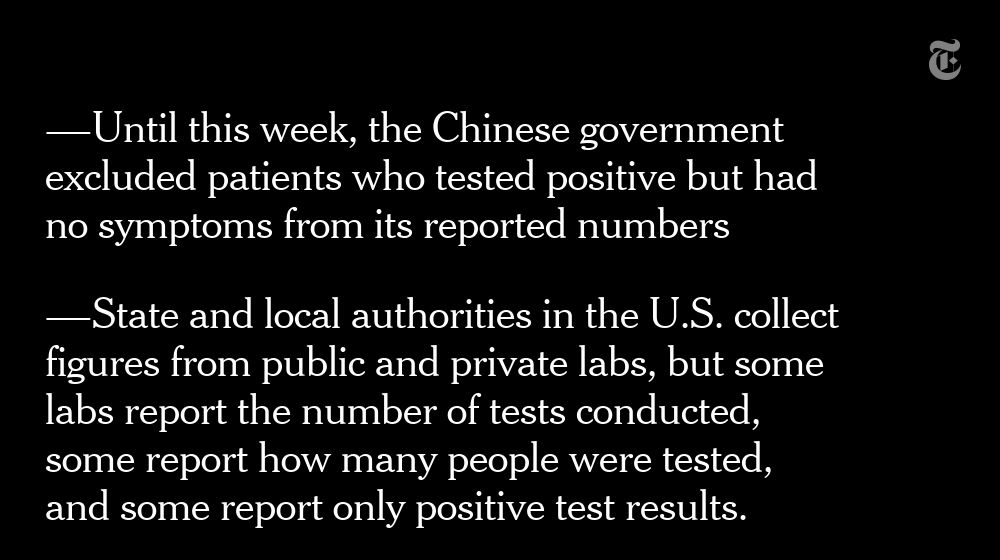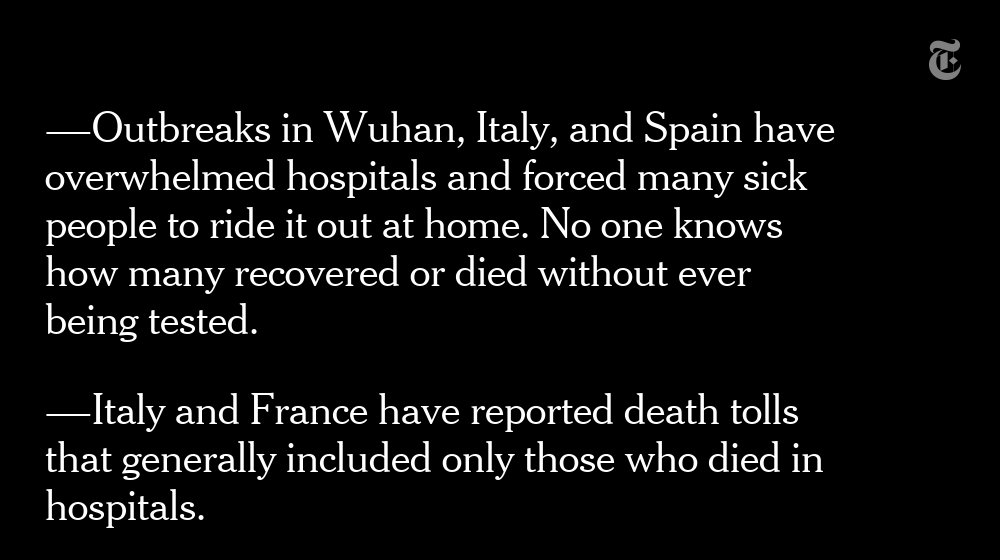The statistics and vocabulary we use to talk about the coronavirus offer a false sense of precision while in reality, the information we have shows only a fraction of what’s going on. https://nyti.ms/34cqjK9 ">https://nyti.ms/34cqjK9&q...
"Confirmed cases," for example, depend on how countries are testing and how they report numbers. Experts say most infections are going undetected, so national tallies are incomplete pictures that may not be comparable — and that& #39;s if countries are forthcoming about their data.
Similarly, you may have seen assertions that Italy and Spain have high mortality rates, Germany& #39;s is low, and China& #39;s is in between. But counting the dead is as flawed and inconsistent as counting the infected. http://nyti.ms/34cqjK9 ">https://nyti.ms/34cqjK9&q...
The meaning of phrases like "widespread testing," "the peak" and "lockdown" also varies widely across the world, and in some cases even varies within a single country.
Read more from our reporter @perezpena. http://nyti.ms/34cqjK9 ">https://nyti.ms/34cqjK9&q...
Read more from our reporter @perezpena. http://nyti.ms/34cqjK9 ">https://nyti.ms/34cqjK9&q...
我们谈论新冠病毒时使用的统计数据和词汇给人以精准的假象,而现实是,我们所掌握的信息仅代表冰山一角。 https://nyti.ms/2xUjssQ ">https://nyti.ms/2xUjssQ&q...
Le statistiche e il lessico che utilizziamo per parlare di coronavirus danno una falsa impressione di precisione. In realtà, le informazioni di cui disponiamo mostrano solo una frazione di ciò che sta avvenendo. https://nyti.ms/3aM8nIx ">https://nyti.ms/3aM8nIx&q...
Les statistiques et le vocabulaire que nous utilisons pour parler du coronavirus donnent une fausse impression de précision, alors qu’en réalité l’information que nous avons ne reflète qu’une partie de ce qui se passe. https://nyti.ms/2yDpsX9 ">https://nyti.ms/2yDpsX9&q...
El vocabulario y las estadísticas que usamos para hablar del coronavirus ofrecen una falsa sensación de precisión cuando, en realidad, la información disponible solo muestra una fracción de lo que sucede. https://nyti.ms/2XejYfI ">https://nyti.ms/2XejYfI&q...

 Read on Twitter
Read on Twitter



